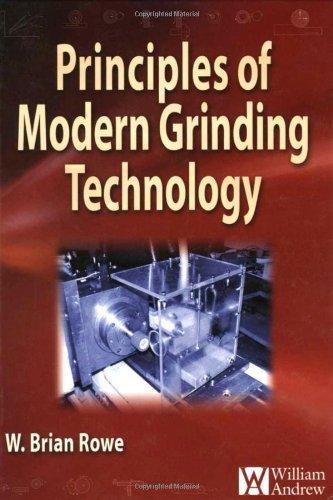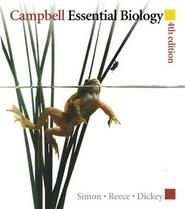 14.0%OFF
14.0%OFF

Download App
| >> | LShop | >> | Book | >> | Technology, Engineer... | >> | Principles Of Modern... |
 14.0%OFF
14.0%OFF
Principles of Modern Grinding Technology
-
ISBN
:
9780815520184
-
Publisher
:
William Andrew
-
Subject
:
Technology, Engineering, Agriculture, Mathematics
-
Binding
:
HARDCOVER
-
Pages
:
300
-
Year
:
2009
₹
16634.0
 14.0% OFF
14.0% OFF
₹
14305.0
Buy Now
Shipping charges are applicable for books below Rs. 101.0
View DetailsEstimated Shipping Time : 5-7 Business Days
View Details-
Description
This book provides insights into modern grinding technology based on wide research and experience. It provides a concise treatment of the principles involved and shows how these lead on to the latest technology developments. The reader learns how to achieve high precision, fast removal rates, and reduced costs. Every aspect of the grinding process and machine comes under the searchlight to show step improvements. Superb grinding machines now produce optical quality finishes due to developments in process control and machine design. It is the same for extremely high removal rates. This book shows how best quality can be improved and costs brought down at the same time as output is increased. The book is aimed at practitioners, engineers, researchers, students, and teachers. The approach is direct, concise and authoritative. Progressing through each major element of the grinding system and then on to machine developments and process control, the reader becomes aware of all aspects of operation and design. Trends are described demonstrating key features. Covered topics include abrasives and super-abrasives, wheel design, dressing technology, machine accuracy and productivity, grinding machine design, high-speed grinding technology, cost optimization, ultra-precision grinding, process control developments, vibration control, coolants, and fluid delivery. Advances in the field are supported with references to leading research. Analysis is presented in later chapters and appendixes with new contributions to machine design, intelligent control, centerless grinding, fluid delivery, cost analysis, and thermal analysis for prediction and control of grinding temperatures. By selecting the right conditions, extremely high removal rates are achieved accompanied by low temperatures. ABOUT THE AUTHOR W. Brian Rowe is a research and consulting engineer, previously Professor and Director of Advanced Manufacturing Technology and Tribology Research Laboratory (AMTTREL) at Liverpool John Moores University in the UK. A multiple recipient of prizes from The Institution of Mechanical Engineers (IMECHE), Dr. Rowe has four decades of experience in academic and industrial positions concerned with machine tools, grinding processes, and tribology. His accomplishments include over 250 published papers, several books, international visiting professorships, and international consulting in industry.Trends in high precision and high speed grinding are exploredPrinciples underlying improvements in machines and processes are explainedNumerically worked examples give scale to essential process parametersRecent research findings and original contributions to knowledge are includedA number of ultra-precision grinding machine developments are included
-
Author Biography
Professor W Brian Rowe has wide industrial and research experience gained mainly with the machine tool, automotive and aerospace industries. His early experience was gained with Austin Motors of Longbridge, Birmingham. Later, at Wickman Machine Tools in Coventry, he was responsible for grinding machine developments. He developed hydrostatic grinding machines for high-stiffness and high-precision. A hydrostatic internal grinding machine won the Queens Award for Industry. His book on hydrostatic and hybrid bearing design is recognised as a foremosttext on the subject. At Manchester University, he carried out seminal research on centerless grinding. This research led to a consuming interest in novel design and optimisation of grinding machines, grinding processes and grinding machine control systems. In 1973, he became Professor and Head of Mechanical Engineering at Liverpool Polytechnic (Liverpool John Moores University since 1992) where he set up and ran the Advanced Manufacturing Technology Research Laboratory (AMTREL). This dynamic group worked closely with industrial companies on every aspect of grinding, including machine design, machine dynamics, high-speed grinding, adaptive control, computer numerical control systems, thermal damage and fluid delivery. In-depth analysis of thermal damage led to new techniques for measurement, analysis and control of grinding temperatures. These studies showed that removal rate could be pushed further than might previously have been imagined.The author has been recognized by a number of awards for his research including a Doctor of Science degree from Manchester University in 1976. Prizes from the Institution of Mechanical Engineers include separate Joseph Whitworth awards for manufacturing and for tribology, the Donald Julius Groen prize and the A M Strickland prize, the Walter R Evans Award and Platinum Eagle Medalfrom the Bently Pressurized Bearing Company in the USA, a Goldsmith Fellowship and a Theodore Krengel Visiting Professorship at Technion Institute. He is a Fellow of the International Academy of Production Engineering (CIRP). He and his group have published more than 250 scientific papers, several books and a number of patents.












 14305.0
14305.0










 0.0
0.0